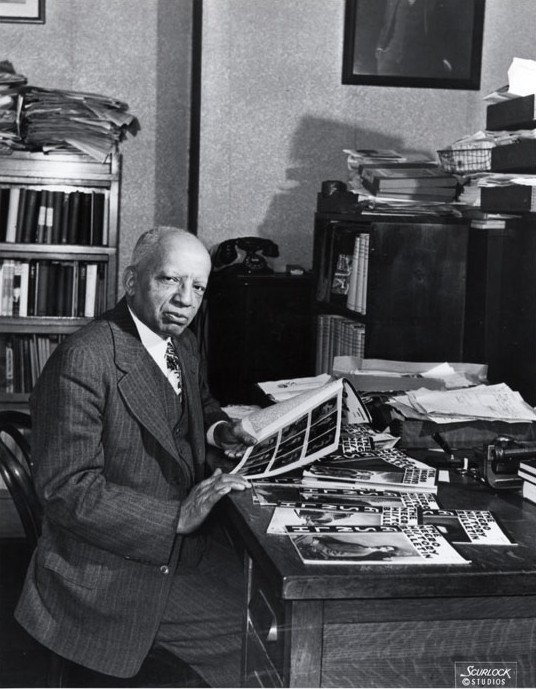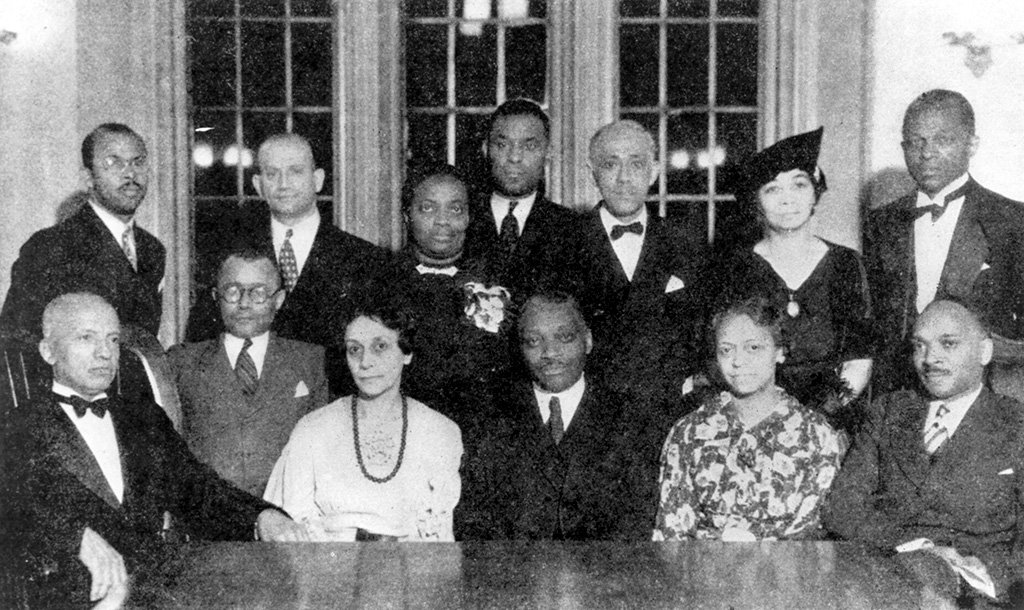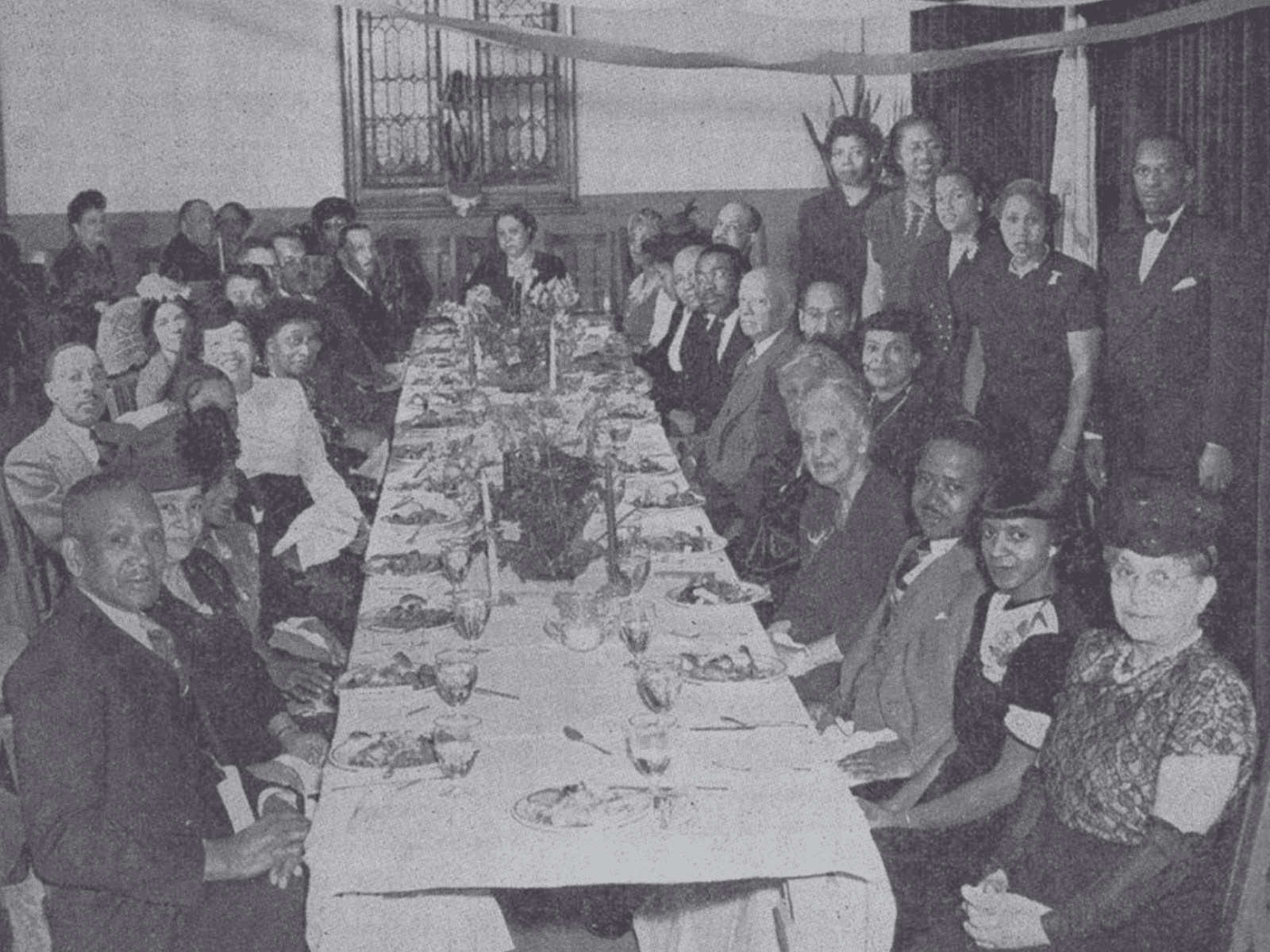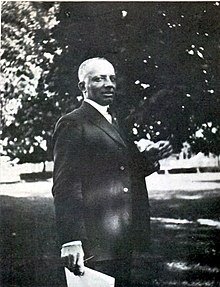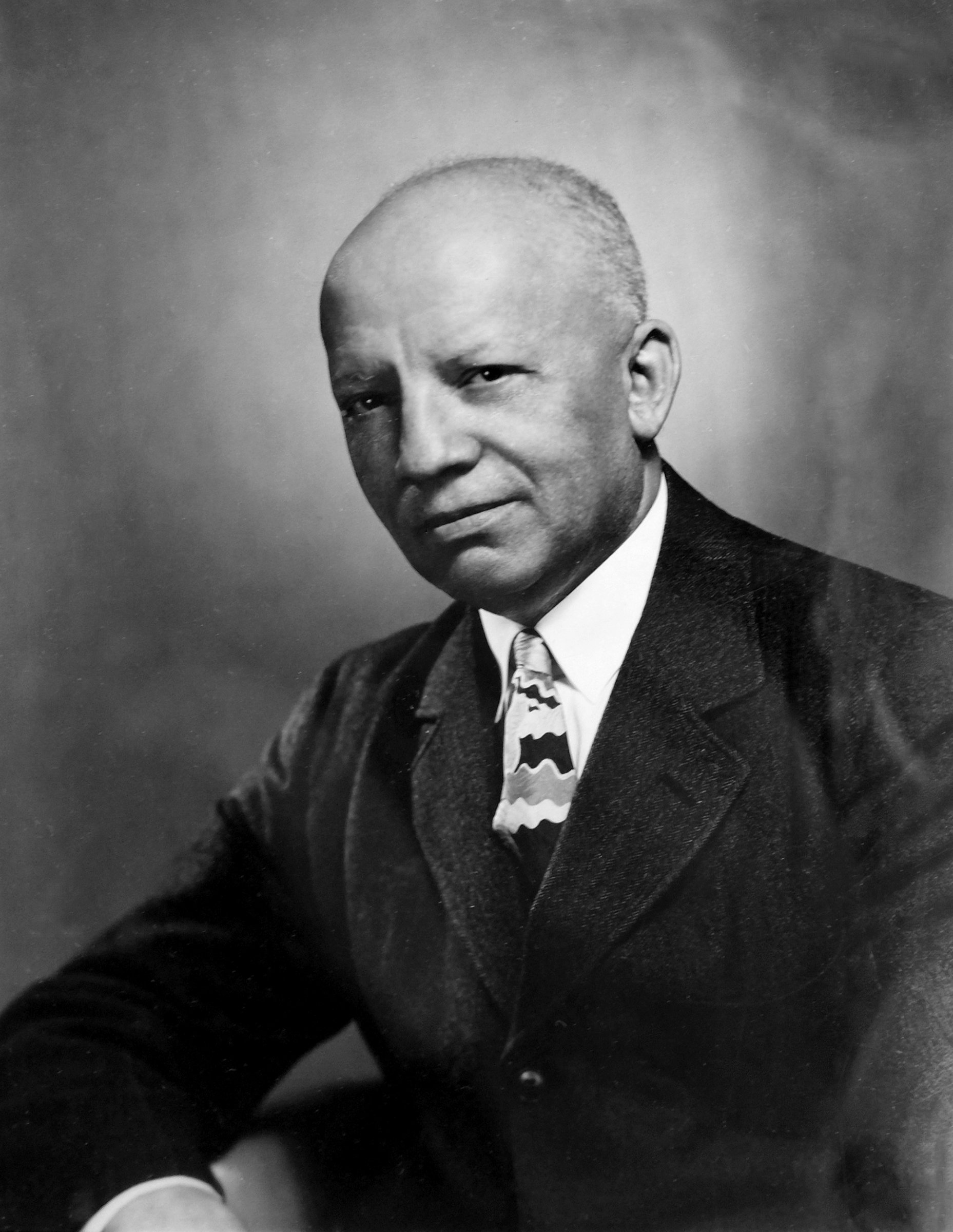History.
“Real education means to inspire people to live more abundantly, to learn to begin with life as they find it and make it better.”
- Carter G. Woodson
Dr. Carter G. Woodson devoted his life to enlightening people about the remarkable achievements and invaluable contributions of Black people throughout history. He fervently believed that through education, we would learn just how Black people helped build, shape societies, and foster prosperity worldwide. For him, education transcended the mere dissemination of facts; it was about instilling critical thinking and empowering individuals to take initiative and action for themselves. As he famously stated, "The mere imparting of information is not education. Above all things, the effort must result in making a man think and do for himself."
“You must give your own story to the world.”
Carter G. Woodson was born in New Canton, Virginia, in 1875, to Anne Eliza (Riddle) and James Henry Woodson, both former slaves who were unable to read or write. Despite the family's profound poverty, his parents found contentment in their freedom. To assist his family financially, Dr. Woodson engaged in various laborious jobs, including sharecropping and mining, which delayed his enrollment in high school until the age of 20. Nonetheless, he compensated for lost time by completing his high school education in less than two years.
“No man knows what he can do until he tries.”
Woodson obtained a Bachelor’s Degree in Literature from Brea College in Kentucky. Following this, he embarked on a journey that took him to various parts of the world. He first traveled to the Philippines, where he served as an education superintendent for the U.S. government. Subsequently, he continued his travels to Africa, Asia, and eventually Europe, where he pursued further studies at the Sorbonne in Paris, France, while simultaneously attending the University of Chicago as a full-time graduate student.
In 1908, Woodson earned a Master's Degree in History, Romance Languages, and Literature from the University of Chicago. He then pursued his academic pursuits at Harvard University, where he enrolled as a Ph.D. candidate in History, focusing on American and European History. Upon completing his doctoral studies, Woodson became the second Black American, following W.E.B. DuBois, to earn a doctorate from Harvard University. It was during one of his history classes at Harvard that Woodson experienced a pivotal moment. While attending a lecture taught by the renowned scholar Edward Channing, Woodson challenged Channing's assertion that "the Negro 'had no history'" by stating firmly, "no people lacked history." This challenge ultimately shaped Woodson's life's work.
“The thought of the inferiority of the Negro is drilled into him in almost every class he enters and in almost every book he studies.”
In 1915, Woodson published "The Education of the Negro." During the same year, he, along with George Cleveland Hall, Alexander L. Jackson, and James E. Stamps, founded The Association for the Study of African American Life and History, Inc. (ASALH). The primary objective of this organization was to encourage scholars to delve into Black History and to educate the American public about Black culture, contributions of Black Americans to the nation's formation, and their broader impact on society. Before the establishment of ASALH, the field of Black History had been largely neglected or misrepresented by historians who perpetuated biased narratives.
In 1916, Woodson initiated the publication of the "Journal of Negro History," which continues to be published today under the title "The Journal of African American History." While leading ASALH, Woodson also balanced teaching commitments in public schools and at the collegiate level. He authored numerous articles on Black History, furthering his mission of education and advocacy.
From 1919 to 1920, Woodson served as the Dean at Howard University, where he introduced the study of Black History and initiated graduate studies in history. Following this tenure, from 1920 to 1922, he assumed the role of Dean at West Virginia State College. In 1922, Woodson retired from teaching to dedicate himself fully to the work of ASALH.
In 1923, Dr. Woodson purchased a three-story brick row house at 1538 9th Street NW, Washington, D.C. This house served as his residence, office, and the headquarters for his organization. Among his staff were notable figures such as Zora Neale Hurston and Langston Hughes. Dr. Woodson dedicated himself entirely to his organization, often being the lowest-paid member of his team. He willingly accepted lower wages to ensure the success of his mission.
Nannie Helen Burroughs and Mary McLeod Bethune were among Dr. Woodson’s closest companions, and they were the only ones permitted to address him by his first name. Despite their attempts to arrange dates for him, Dr. Woodson viewed romantic relationships as a luxury he couldn't afford. Having committed to a life of poverty and celibacy, he chose not to subject a partner to the frugal lifestyle he led.
Actively engaged in the community, Dr. Woodson frequently delivered talks at local schools. Known affectionately as “Book Man” by neighborhood children, he was often seen carrying numerous books while strolling through the area. He shared stories of Egyptian pharaohs and African kings and queens with the children, emphasizing that Black history extended far beyond the era of slavery. Dr. Woodson aimed to instill in them a sense of pride in their heritage and to highlight the significant contributions of Black people to the advancement of civilization.
“We have a wonderful history behind us. ... If you are unable to demonstrate to the world that you have this record, the world will say to you, ‘You are not worthy to enjoy the blessings of democracy or anything else.’”
Despite his efforts with ASALH, Dr. Woodson recognized that young Black Americans still lacked adequate education about their ancestors' achievements and heritage. To address this gap, Woodson enlisted the support of his fraternity, Omega Psi Phi, to establish Negro History and Literature Week. This initiative aimed to enhance the study and scholarship of Black history and make it accessible to young Black individuals across America.
Expanding on this idea, Woodson introduced Negro History Week in February 1926. He specifically chose February due to the birthdays of Abraham Lincoln and Frederick Douglass, two influential figures in American history. Lincoln was born on February 12th, while Douglass, whose exact birth date is unknown, selected February 14th as the day to commemorate his birth.
Schools nationwide embraced Negro History Week, and Woodson, along with ASALH, worked diligently to provide them with educational materials. In 1976, Negro History Week evolved into Black History Month when President Gerald Ford officially extended its recognition. Ford urged the public to "seize the opportunity to honor the too-often neglected accomplishments of Black Americans in every area of endeavor throughout our history."
Since then, Black History Month has been celebrated annually in February, serving as a time to recognize and commemorate the invaluable contributions of Black people to society.
“We should emphasize not Negro History, but the Negro in history. What we need is not a history of selected races or nations, but the history of the world, void of national bias, race, hate, and religious prejudice. ”
How Yoga Can Help
“Yoga is as old and traditional as civilization, yet it persists in modern society as a means to achieving essential vitality. But yoga demands that we develop not only strength in body but attention and awareness in mind. The yogi knows that the physical body is not only the temple for the soul but the means by which we embark on the inward journey toward the core.”
- B.K.S. Iyengar
The standing poses known as Utthia Sthiti are the foundations of our practice. These poses are both energizing and grounding. With regular practice standing poses help strengthen and stretch the muscles in the arms and legs, tone the abdominal muscles, create freedom and extension in the spine, and open the chest and shoulders. In this class we learn the fundamentals of these essential postures to establish a solid foundation for our practice and develop the flexibility and muscular awareness required for more advanced practice. This class is inspired by Carter G. Woodson, who created "Negro History Week" to deepen the teaching and study of Black men and women in history, and their contributions to society. He believed that knowledge of where we come from would help elevate our community and society as a whole. In this class our practice of the standing poses does exactly that on a physical, mental, and spiritual level.
Poses 1-2
1. Adho Muka Virasana (Downward Facing Heroes Pose/ Child’s Pose) 2. Adho Muka Svanasana (Downward Facing Dog Pose) These poses strengthen and stretch the muscles in the arms and legs, which helps to fully extend the spine.
Poses 3- 5
3. Urdhva Hastasana (Upward Arms Pose) 4. Urdhva Baddanguliyasana (Upward Bound Fingers Pose) 5. Paschima Baddanguliyasana (Reverse Bound Fingers Pose) These poses stretch the arms and legs to lengthen the sides of the body, and mobilize the shoulders and upper back.
Poses 6- 9
6. Utthita Trikonasana (Extended Triangle Pose) 7. Virabhadrasana II (Warrior Pose II) 8. Utthita Parsvakonasana (Extended Side Angle Pose) 9. Prasarita Padottanasana (Extended Wide Angle Pose) In addition to lengthening the sides of the body and opening the chest, these poses help create freedom and space in the hip joint.
Pose 10.
10. Salamba Sarvangasana (Supported Shoulder Stand) A regular shoulder stand practice helps balance and nourish the endocrine system (our hormonal system) as well as the nervous system. Shoulder stand also activates the abdominal organs.
Pose 11.
11. Savasana (Corpse Pose) This is the final resting pose. It helps remove fatigue. This relaxing position also helps calm the mind, and reduce stress.




